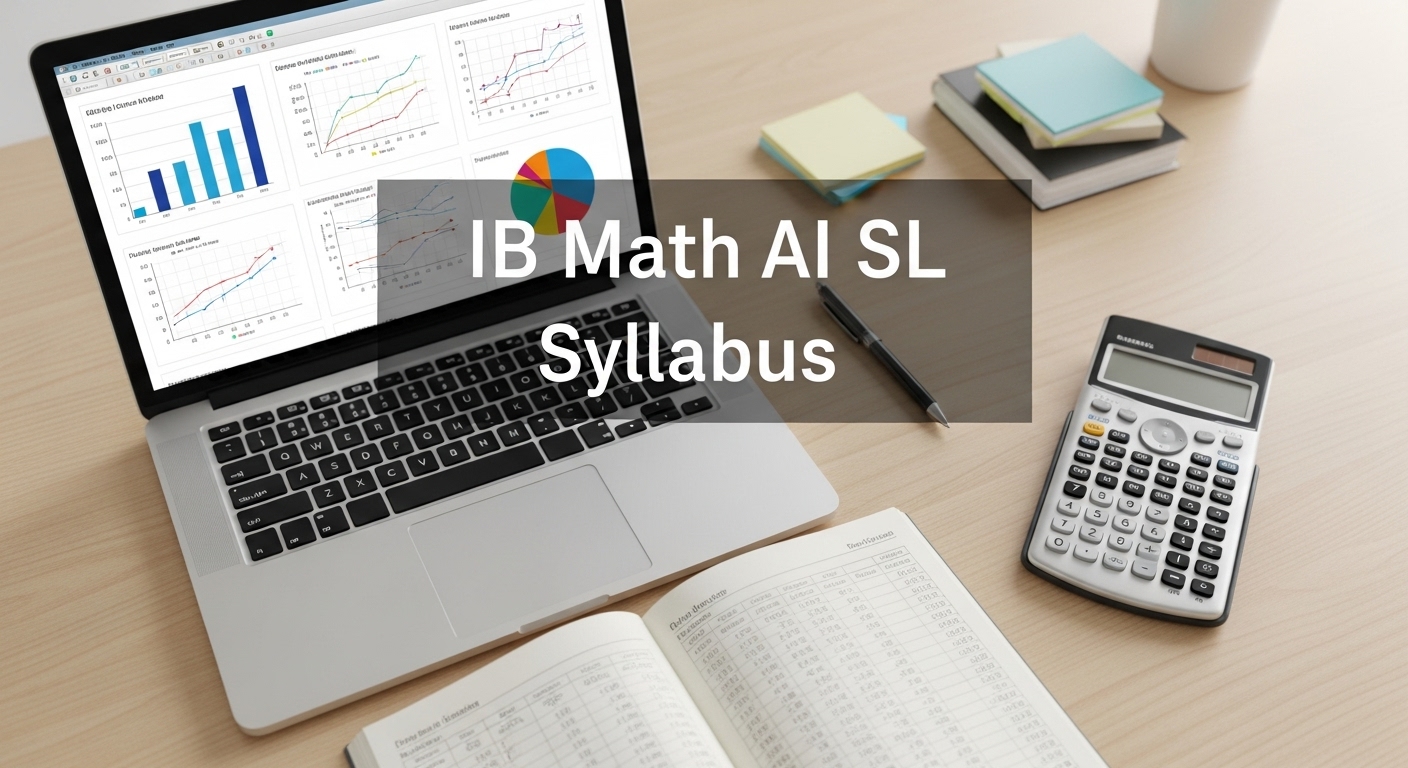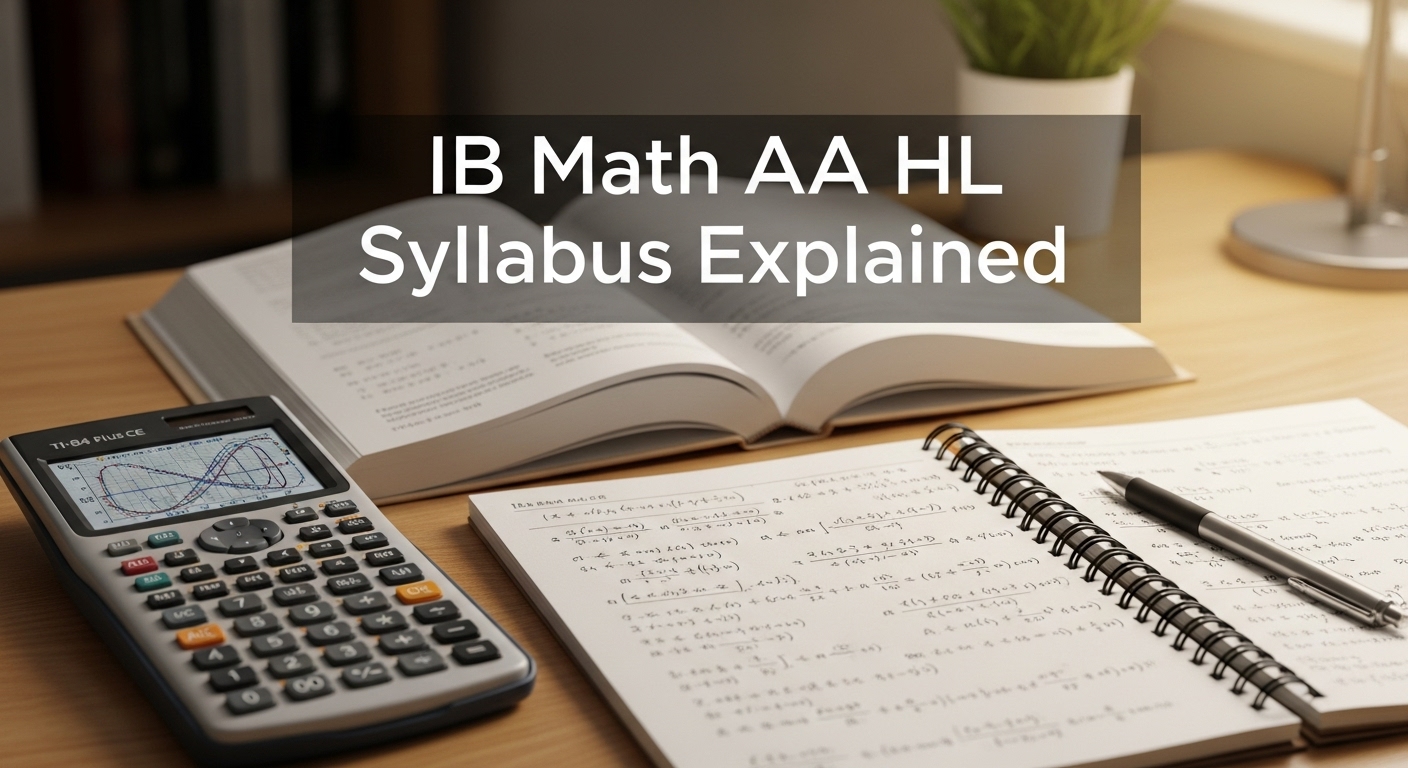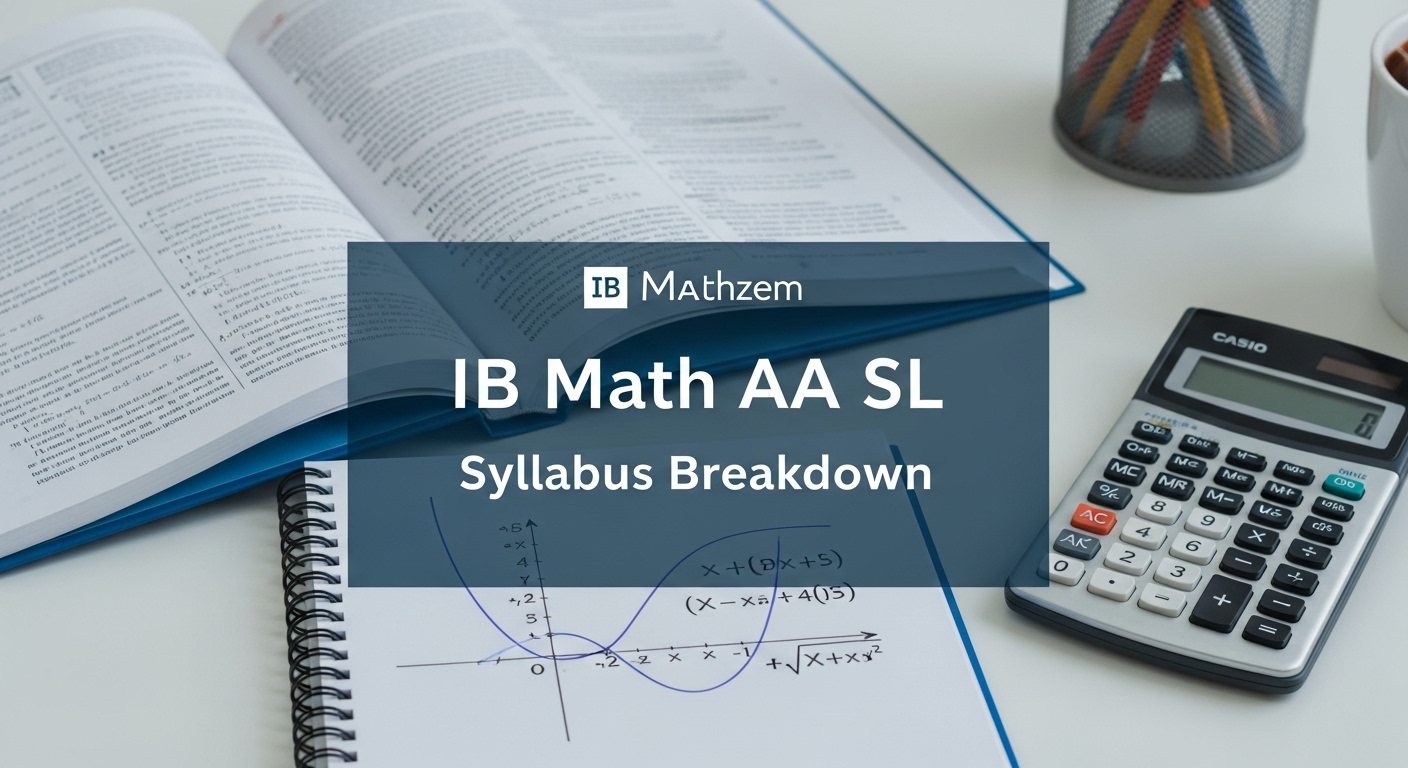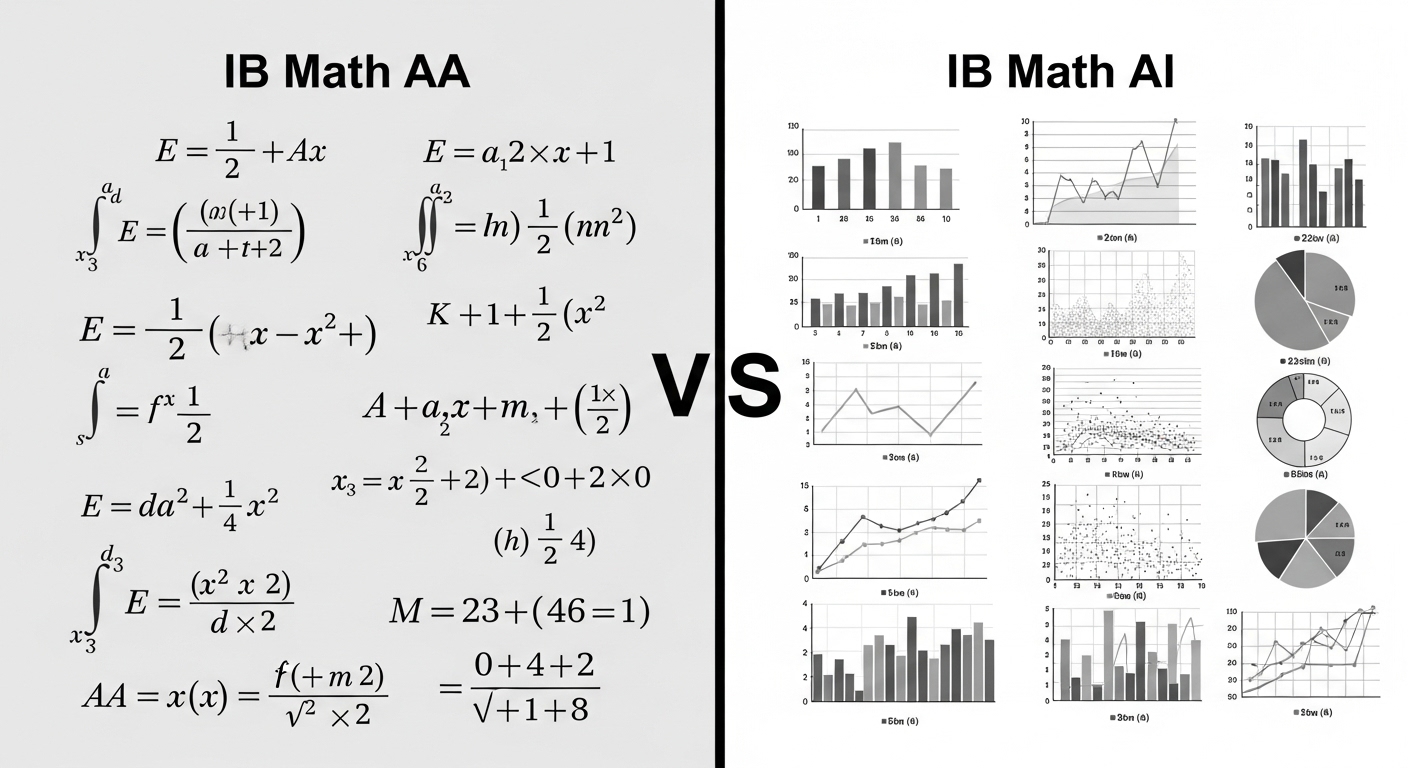The IB Math AI SL syllabus focuses on real-world mathematics, statistics, modeling, and technology-based problem-solving. It’s ideal for students who prefer applied maths, use of data, and understanding how maths connects to real-life situations.
In this guide, you’ll find a complete breakdown of the 2025 syllabus, exam structure, topic explanations, and proven strategies to boost your grade. You’ll also learn how Mathzem supports AI SL students through self-learning, group lessons, and 1-to-1 tutoring.
Let’s explore everything you need to succeed in IB Math AI SL.
Table of Contents
What IB Math AI SL is Designed For
AI (Applications & Interpretation) develops:
- Data literacy
- Mathematical modelling
- Use of technology (GDC & software)
- Application-based reasoning
- Real-world interpretation
This course is ideal for students pursuing:
- Business
- Psychology
- Economics
- Design
- Social sciences
- Humanities
- Non-STEM pathways
It focuses more on applications than theoretical proof.
Full IB Math AI SL Syllabus Breakdown
The AI SL syllabus covers five main strands:
Number and Algebra
Key topics include:
- Logarithms
- Sequences & series
- Financial mathematics
- Percentages, interest, loans
- Systems of equations
AI places real-world context on every problem.
Example:
Evaluate monthly repayments on a loan with varying interest rates.
Functions
Students learn to:
- Interpret graphs
- Identify maximum/minimum points
- Use function notation
- Perform simple transformations
- Model relationships with functions
AI emphasises interpretation more than algebraic manipulation.
Geometry and Trigonometry
Topics include:
- Bearings
- Trigonometric ratios
- Sine rule & cosine rule
- Areas and perimeters
- 2D/3D modelling
Unlike AA, AI avoids heavy trig identities and focuses on application.
Statistics and Probability (The Heart of AI SL)
This is the largest part of the syllabus.
You’ll learn:
- Data analysis
- Regression
- Probability distributions
- Standard deviation
- Correlation
- Histogram & box plot interpretation
- Expected value
- Normal distribution
AI students spend a lot of time working with real data and graphs.
Calculus (Basic Introduction)
AI SL includes:
- Derivatives for simple functions
- Gradient interpretation
- Optimization
- Area under curves (numeric methods)
Calculus is lighter than AA, but still essential for modelling.
IB Math AI SL Exam Structure
Paper 1 (No Calculator) – 40%
Tests:
- Algebra
- Simple functions
- Non-tech geometry
- Basic statistics reasoning
Paper 1 is short but requires accuracy.
Paper 2 (Calculator Allowed) – 40%
Focuses on:
- Modelling
- Real-world interpretation
- Regression
- Data analysis
- Advanced calculator use
Your calculator skills can significantly increase your marks.
Internal Assessment (IA) – 20%
The IA is a data-driven investigation.
Great AI SL IA topics include:
- Predicting house prices using regression
- Modelling population growth
- Weather pattern analysis
- Sports performance analysis
- Exam score prediction
Mathzem offers IA support, feedback, and structure templates.
Is IB Math AI SL Hard?
It depends on the student.
Students say:
- “AI SL is easier than AA SL algebraically.”
- “Statistics can be overwhelming at first.”
- “The IA is challenging because you must justify your modeling choices.”
AI is approachable if you are comfortable with data, technology, and context-based reasoning.
Best Strategies to Succeed in IB Math AI SL
Master Graphical Interpretation
AI SL tests your ability to:
- Read graphs
- Understand parameters
- Explain real-world behaviour
Use Your Calculator as a Tool, Not a Crutch
Know how to:
- Run regression
- Solve simultaneous equations
- Use distributions
- Graph functions efficiently
Mathzem offers detailed calculator tutorials for TI & Casio models.
Practise Statistics Regularly
AI’s heaviest component.
Weekly practice = significantly higher Paper 2 marks.
Start Your IA Early
A strong IA can lift your final grade.
Study Using Real-World Examples
AI rewards reasoning, not just calculation.
Try interpreting:
- Survey results
- Weather data
- Business growth graphs
- Trend lines
Self-Learning vs Group Classes vs 1-to-1 Tutoring
This section helps students choose the best learning method.
Self-Learning (Flexible & Affordable)
Perfect for independent learners.
- Study anytime
- Access videos & examples
- Practice at your own pace
- Very cost-effective
Mathzem’s free IB lesson library supports self-learners powerfully.
Group Learning (Structured and Interactive)
Great for students needing consistency.
- Regular live sessions
- Learn with peers
- Collaborative problem-solving
- More interactive than self-study
Group classes keep you motivated.
One-to-One Tutoring (Most Effective)
Ideal for:
- Struggling students
- Students aiming for 6 or 7
- Students with IA or exam weaknesses
Benefits:
- 100% personalised
- Fast improvement
- Deep concept mastery
Mathzem offers highly effective 1-to-1 IB tutoring.
Mathzem Pricing Plans
Explore all IB Math study options:
https://mathzem.com/membership-pricing/
Choose from:
- Self-study access
- Group lessons
- 1-to-1 tutoring
- Exam crash courses
- IA guidance packages
Conclusion
The IB Math AI SL syllabus is rich in real-world applications and ideal for students who prefer meaningful, practical mathematics. With strong calculator skills, consistent practice in statistics, and the right learning support, achieving a high score in AI SL is absolutely possible.
Mathzem gives students everything needed—self-learning, group lessons, and bespoke tutoring—to succeed confidently in AI SL.





